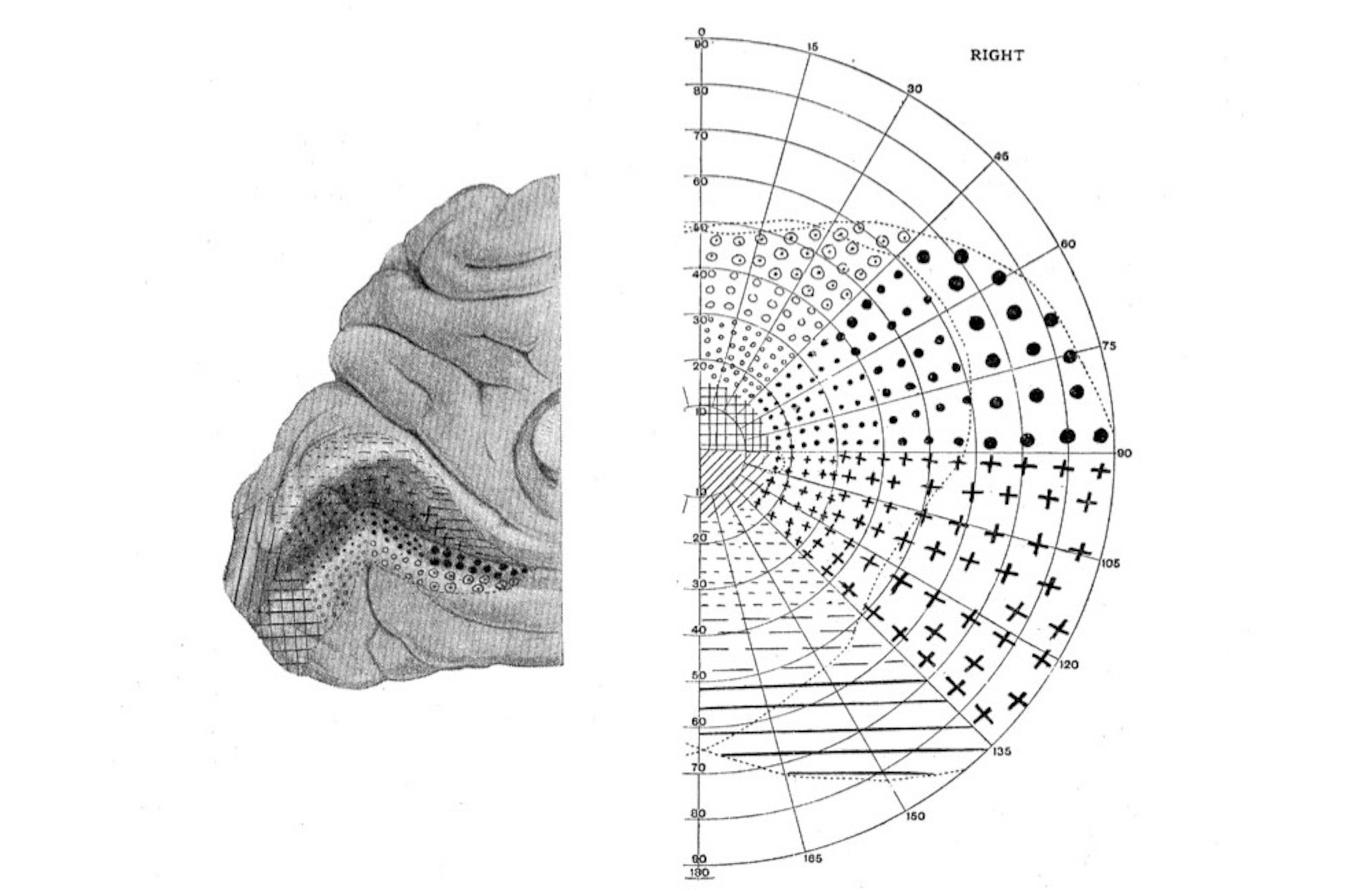
The 19th Century Doctor Who Mapped His Hallucinations
Hubert Airy first became aware of his affliction in the fall of 1854, when he noticed a small blind spot interfering with his ability to read. “At first it looked just like the spot which you see after having looked at the sun or some bright object,” he later wrote. But the blind spot was growing, its edges taking on a zigzag shape that reminded Airy of the bastions of a fortified medieval town. Only, they were gorgeously colored. And they were moving.
“All the interior of the fortification, so to speak, was boiling and rolling about in a most wonderful manner as if it was some thick liquid all alive,” Airy wrote. What happened next was less wonderful: a splitting headache, what we now call a migraine.

Airy was a student when he suffered his first migraine, but he later became a physician. His description of his aura—the hallucinatory symptoms that can precede a migraine—was published in the Philosophical Transactions of the Royal Society in 1870, along with a drawing that showed how the hallucination grew to take over much of his visual field. “It’s an iconic illustration,” says Frederick Lepore, an ophthalmological neurologist at Rutgers Robert Wood Johnson Medical School in New Jersey. “It’s so precise, like a series of time-lapse photographs.”
Lepore showed Airy’s drawing to 100 of his migraine patients who experience a visual aura (only a minority do). Forty-eight of them recognized it instantly, he wrote in a historical note in the Journal of Neuro-Ophthalmology in 2014. He still shows the drawing to his patients today. “People are astonished,” he says. “They say, ‘Where did you get that?’”
What’s more remarkable, Lepore says, is that Airy’s drawing anticipates discoveries in neuroscience that were still decades in the future.
Airy correctly deduced that the source of his hallucinations was his brain, not his eyes. He wasn’t the first to do this, but it was still an open question at the time.
What’s most prescient about his drawing, though, is that it anticipates the discovery of an orderly map of the visual world in the primary visual cortex, a crucial brain region for processing what we see. When Airy published his paper, that discovery was still nearly half a century away.

Most accounts credit the British neurologist Gordon Holmes with that later discovery. Holmes studied the visual deficits of hundreds of soldiers who’d suffered gunshot wounds to the back of the head in Word War I. “The British helmet was seated high on the head,” Lepore wrote, in a historical paper describing Holmes’s contributions. Unfortunately, this left the primary visual cortex largely unprotected, and provided Holmes many opportunities to study damage to this part of the brain.
By carefully mapping the soldiers’ blind spots and the locations of their wounds, Holmes discovered that damage to the most posterior part of visual cortex (that is, the part farthest back in the head) resulted in blindness at the center of the visual field, whereas wounds located closer to the front of the visual cortex resulted in blindness off to the side. Everything the eyes see maps neatly onto the visual cortex.
Holmes also discovered—and this is the part that relates to Airy’s drawing—that the visual map is magnified at its center. If the visual cortex is a road atlas, the part that represents the center of the visual field is like one of those inset city maps that show a smaller area in lots more detail.
This meshes nicely with Airy’s observation that the zigzags around his blind spot were packed tightly together in the center of his visual field and grew wider in the periphery. “Airy’s drawing fits beautifully with our modern conception of how the visual cortex is organized,” Lepore says.

There’s still much we don’t know about migraines and migraine auras. One hypothesis is that a sort of electrical wave sweeps across the visual cortex, causing hallucinations that spread across the corresponding parts of the visual field. In a loosely descriptive way, Airy’s time series drawings—showing an ever expanding shape—jibe with this too.
Even less is known about the neural mechanisms that might produce the vivid colors Airy drew and described. There are areas of the visual cortex, including one called V4, that contain neurons that respond to specific colors, as well as other neurons that respond to lines of specific orientations. Perhaps an electrical wave passing through such areas could produce colored zigzags, Lepore says. But no one really knows.
Airy wasn’t the first to draw his migraine aura. In fact, his father, George, who happened to be the Royal Astronomer, had published a sketch of his own zigzag hallucinations five years earlier (see above). A German neurologist published a fairly crude, looping sketch back in 1845. And others did so afterwards. The drawings made by the French neurologist Joseph Babinski (see below) are especially colorful, if lacking in detail.
But Hubert Airy’s drawing has stood the test of time better than most. His paper in the Philosophical Transactions, published at age 31, was his only contribution to the field. It’s written in the somewhat pompous, somewhat conversational style of a 19th-century polymath relating his observations to other learned men. One lengthy section recounts the observations of a Swiss doctor in the original French. Naturally, the readers of such a prestigious journal could translate for themselves.
That Airy got so much right at a time when so little was known about the brain is a testament to his powers of observation, Lepore says. He documented what he saw meticulously, even though it was visible to himself alone.

–Greg Miller
